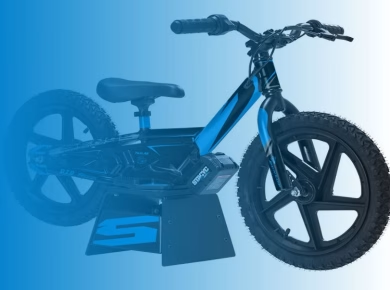When it comes to tracking fitness, two names often rise to the surface: WHOOP and Fitbit. Both brands have garnered a significant following, each boasting unique features and capabilities. But which one delivers better accuracy? As fitness enthusiasts increasingly rely on technology to monitor their health, understanding the differences between these devices becomes essential. This article dives deep into the accuracy of WHOOP and Fitbit fitness trackers, exploring their features, methodologies, and user experiences to help you make an informed choice.
Understanding WHOOP and Fitbit
WHOOP and Fitbit cater to different segments of the fitness market. WHOOP is designed primarily for serious athletes and fitness enthusiasts who want to push their limits. It emphasizes recovery, strain, and sleep patterns, focusing on helping users optimize their performance. The device is subscription-based, providing ongoing data analysis and insights.
Fitbit, on the other hand, has a broader appeal, offering a range of devices from basic step counters to advanced smartwatches. Its user-friendly interface and comprehensive health metrics make Fitbit accessible to casual users as well as fitness buffs. With Fitbit, you get a variety of features, including heart rate monitoring, sleep tracking, and even stress management tools.
Accuracy of Heart Rate Monitoring
One of the primary functions of any fitness tracker is heart rate monitoring. Both WHOOP and Fitbit employ optical sensors to measure heart rate, but their accuracy can vary depending on the situation.
WHOOP’s Approach to Heart Rate Monitoring
WHOOP utilizes a sophisticated algorithm to analyze heart rate data. It measures heart rate variability (HRV), which is crucial for understanding how well your body is recovering from workouts. Users have reported that WHOOP provides consistently accurate heart rate readings, especially during high-intensity workouts. The device’s focus on recovery metrics ensures that users can optimize their training while minimizing the risk of overtraining.
Fitbit’s Heart Rate Monitoring Capabilities
Fitbit trackers also excel in heart rate monitoring, but the accuracy can sometimes fluctuate based on the model. Many users have found that while Fitbit provides a good approximation of heart rate during steady-state exercises, it may struggle during high-intensity interval training (HIIT) or activities that involve rapid arm movements. However, Fitbit’s integration with the Fitbit app allows users to see trends over time, which can be beneficial for tracking overall fitness.
Sleep Tracking: WHOOP vs. Fitbit
Sleep tracking is another critical component of any fitness tracker. Both WHOOP and Fitbit offer detailed insights into sleep patterns, but they approach it differently.
WHOOP’s Sleep Analysis
One of WHOOP’s standout features is its sleep analysis. The device tracks not only how long you sleep but also how well you sleep. WHOOP provides a sleep score based on the quality of your rest, emphasizing the importance of recovery in athletic performance. Users can gain insights into their sleep cycles and receive personalized recommendations to improve their sleep quality.
Fitbit’s Sleep Tracking Features
Fitbit also offers comprehensive sleep tracking, including insights into light, deep, and REM sleep stages. Users appreciate the ease of accessing their sleep data through the Fitbit app, which presents detailed graphs and trends. However, some users have noted that Fitbit’s sleep tracking can occasionally misinterpret periods of wakefulness, leading to discrepancies in the reported data.
Calorie Tracking Accuracy
Calorie tracking is a significant aspect of many fitness regimes. Accurate calorie counts can help users manage their diets and fitness goals more effectively.
WHOOP’s Caloric Expenditure Estimates
WHOOP calculates caloric burn based on a combination of heart rate data and personal metrics, such as age, weight, and activity level. Many users have found that WHOOP provides more precise calorie estimates during workouts, particularly when engaged in strenuous activities. This meticulous tracking can lead to better dietary decisions and overall fitness planning.
Fitbit’s Calorie Tracking Approach
Fitbit’s calorie tracking is similarly robust, incorporating data from daily activity levels and heart rate. However, users have reported that the estimates can vary, particularly for less intense activities. Fitbit’s app facilitates logging food intake, allowing users to track their caloric balance more effectively. The social features of Fitbit also promote accountability, encouraging users to stick to their goals.
User Experience and Interface
The user experience can significantly impact how effectively individuals use their fitness trackers. Both WHOOP and Fitbit have distinct interfaces that cater to their target audiences.
WHOOP’s User Interface
WHOOP’s interface is sleek and minimalistic, focusing on delivering data without overwhelming the user. The app provides a comprehensive overview of your performance metrics, including recovery, strain, and sleep. However, the learning curve can be steep for new users who may need time to understand the significance of the provided data. The subscription model also means that users need to be committed to utilizing the device fully.
Fitbit’s Intuitive Design
Fitbit shines in the user experience department, with an interface that is often described as intuitive and straightforward. The app is user-friendly, making it easy for individuals of all levels to navigate their health data. Fitbit also integrates seamlessly with various third-party apps, providing users with even more options for tracking their fitness journeys.
Durability and Comfort
Comfort and durability are crucial factors when choosing a fitness tracker, especially for those who wear it throughout the day and night.
WHOOP’s Comfortable Design
WHOOP is designed for all-day wear, featuring a lightweight band that feels comfortable on the wrist. The device is also waterproof, making it suitable for swimming and other water activities. However, some users have reported that the band can feel restrictive during sleep if adjusted too tightly.
Fitbit’s Variety of Bands
Fitbit offers a variety of models with different band styles and sizes, providing options for different preferences. Many users appreciate the ability to customize their Fitbit with interchangeable bands, allowing for both style and comfort. However, certain models may feel bulkier or less comfortable during sleep compared to WHOOP.
Pricing and Subscription Models
Understanding the financial commitment involved is essential when choosing between WHOOP and Fitbit.
WHOOP’s Subscription-Based Model
WHOOP operates on a subscription model, which can be a turn-off for some users. The device itself is initially priced reasonably, but the ongoing subscription fee is required to access the full range of features and analytics. This model is ideal for serious athletes who value the continuous insights WHOOP provides, but casual users might find it less appealing.
Fitbit’s One-Time Purchase
Fitbit’s pricing structure is more straightforward, as users typically make a one-time purchase for their device. This pricing model can be more appealing for those who are not looking to commit to a subscription. Additionally, Fitbit offers a range of devices at different price points, making it accessible to a broader audience.
Final Thoughts: Which Tracker Wins?
Choosing between WHOOP and Fitbit ultimately depends on your individual needs and fitness goals. If you’re a serious athlete committed to optimizing your performance and recovery, WHOOP’s advanced metrics and focus on strain and recovery are likely to serve you well. The subscription model may be a worthwhile investment for those looking to gain deep insights into their training and recovery.
On the other hand, if you’re looking for a versatile, user-friendly device that covers a broad range of health metrics, Fitbit may be the better choice. With its one-time purchase model and diverse product offerings, Fitbit caters to a wider audience, from casual walkers to fitness enthusiasts.
In conclusion, both WHOOP and Fitbit offer impressive features, but their effectiveness hinges on your unique fitness journey. By weighing the pros and cons of each device, you can make an informed decision that aligns perfectly with your lifestyle and fitness aspirations. Whether you choose WHOOP or Fitbit, the important thing is to stay active, monitor your progress, and enjoy the journey towards better health.



